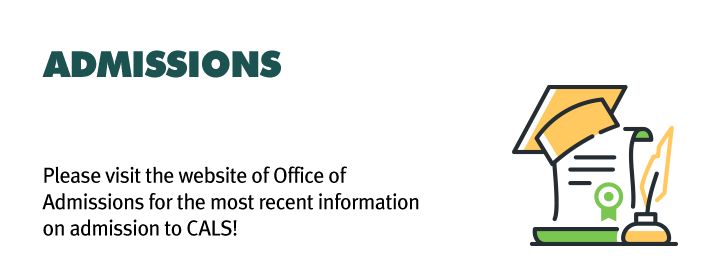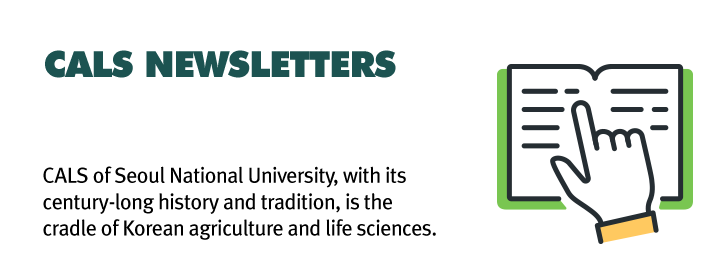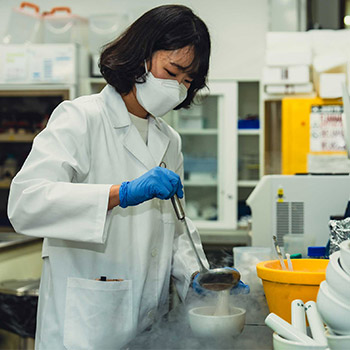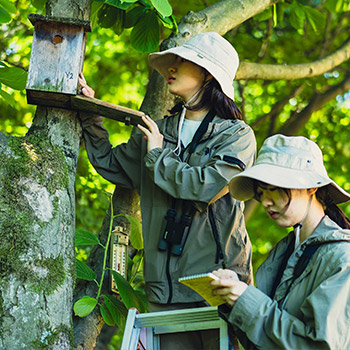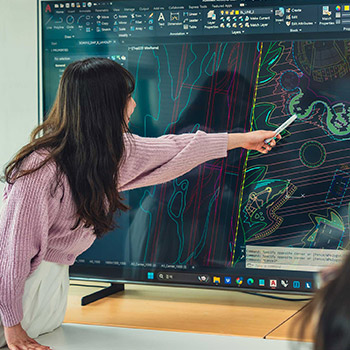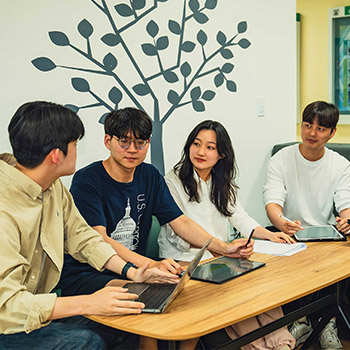Interviewer: Choi Dong-seok (team leader), Park Seung-jin master's degree, and Hwang Ye-bin master's degree
On November 27, 2021, the "World Artificial Intelligence (AI) Robot Car Race" was held at the Future Mobility Technology Center (FMTC) of Siheung Campus, Seoul National University, hosted by the Segye Ilbo. Eight schools participated in the competition, fiercely competing against artificial intelligence and autonomous driving technology. Among them, the "Quick Tractor (Choi Dong-seok, Kim Yong-hyun, Park Tae-yeon, Kang Kyung-min, Hwang Ye-bin, Park Seung-jin, Jeon Chan-woo, and Yoon Chang-ho)" team led by Professor Kim Hak-jin of Seoul National University won the grand prize by combining the stability and precision of agricultural tractors with autonomous driving technology.
The team name is Quick Tractor. Most of the team members belong to Professor Kim Hak-jin's laboratory, and the laboratory was conducting research on autonomous agricultural machinery. Tractors are slower than regular cars, but they need faster speed as they compete in racing competitions. So we decided to name the team 'Quick Tractor' because we wanted to make a fast tractor.
Team members, who were previously conducting research on autonomous agricultural machinery, saw the announcement of the competition and wondered if they could apply our technology to the racing competition, so they went out to "try it." Naturally, the news of the competition became known around them, and team members gathered because they were in sync. Some team members studied the following of autonomous driving paths of agricultural machinery, recognition of obstacles, control, and judgment in Professor Kim Hak-jin's lab. Some participated in the competition because they were curious about how well this could be implemented in self-driving cars.
The 'Quick Tractor' team was divided into two teams: 'Driving' and 'Recognition'. When preparing for the competition, the two teams each made a skeleton code and later combined it. The driving team developed a path follow that allows autonomous robots to follow the path, and the recognition team developed an algorithm to detect obstacles. Team leader Choi Dong-seok was in charge of connecting and integrating the codes of the two teams.
There were many space constraints as experiments were conducted with a large robot platform. In order to verify the work, the car had to be transported from the lab to the track, but it was difficult on the way. It was impossible to drive a car directly due to the steep slope of the school uphill, so we had to load it into a truck, but it was difficult to load the car into a truck, and we had to get the truck with the help of a teacher at Seoul National University. It was cumbersome to ask him every time, and we think it was hard because we were sorry to the teacher. The main competition was held at Seoul National University's Siheung Campus, making it difficult to travel between Siheung and Gwanak.
In addition, unlike previous competitions, the competition had to deal with hardware, so we had to solve the problem of hardware failure directly. Furthermore, just before the competition, the hardware broke down, so we wandered all night, and we was able to go to the competition by fixing it at dawn on the same day. The whole team really stayed up all night that day. In fact, when the competition was just around the corner, we stayed up all night because we were busy implementing what we made. Also, we had to run from the side to make sure that the car was going well while running. Unlike agricultural machinery, which is about 4km per hour, the car of the AI car race competition was difficult to run with because it was a car that ran up to 20km per hour.
In the preliminary round, which had to be driven quickly, the "Quick Tractor" team was ranked low. However, through the preliminary round, we were able to realize that even if we made a minor mistake, we could not drive normally and that we were anxious about trying to speed up. The professor also advised us to increase stability. Therefore, we aimed to finish the race without accidents, focusing on stability rather than speed. Unlike the preliminary round, which runs only one lap each, the "Quick Tractor" team predicted that we would face many situations in the finals, so we chose a strategy to focus on precision and safety. Thanks to this strategy, the "quick tractor" team's car finished driving safely and came in first place while other teams collided with each other.
In agriculture, agricultural machinery is responsible for planting crops and grounding. Therefore, if there is a section where crops are stepped on or not worked due to an error that occurs during driving, it causes a big problem in crop production. In addition, there is a high risk of a tractor falling because the road surface is unbalanced, such as a rice paddy bank. Agricultural machinery should be designed more precisely and safely because even a small error of 1 to 2 cm leads to a problem in production.
Due to the decrease in the agricultural population and the lack of labor, autonomous driving of agriculture has become a must-have goal. Autonomous agricultural machinery can easily access agriculture even for unskilled people and increase production compared to the labor force. In fact, it is difficult for farmers to go straight because they use tractors on curved roads. However, if autonomous driving is applied, unskilled people can use tractors, and the problem of fatigue of elderly farmers can be solved.
Park Seung-jin: What I am currently studying is adding artificial intelligence to GPS-based autonomous driving. If driving only with GPS, there are limitations that are difficult to cope with actual road irregularities or unexpected situations. If artificial intelligence is added to this, it can make more complete autonomous driving through reinforced learning of artificial intelligence. The research goal is to realize autonomous driving by estimating various changes that may occur on the road, not on general roads.
Team leader Choi Dong-seok: I don't have a specific research goal because I'm an undergraduate yet, but I'm very interested in the autonomous driving. After entering the laboratory, I deal with various keywords such as artificial intelligence. Artificial intelligence is used more in agriculture than I thought, so I want to dig deep into artificial intelligence and study it.
Hwang Ye-bin: For complete automation of tractors, research for unmanned work is needed. So I am studying safety systems to prevent collisions with people or obstacles in unmanned driving conditions.
We think the experience that can be done only with undergraduate classes is limited. Therefore, we hope to make good use of the undergraduate research students and institutional intern programs. Through this activity, we can learn about what is used in the actual industry, and team leader Choi Dong-seok was also able to grow through such experiences. Please contact the laboratory you are interested in and experience the practice while participating in the project there. If you are interested in the AI Car Race competition, contact Professor Kim Hak-jin, and it is expected that a team will be formed under Professor Kim Hak-jin's guidance in the second competition. However, we don't know if the existing fast tractor team members will participate again.
If the car in front of yours is slow or stopped, our car should avoid driving. For this, it was necessary to develop an avoidance driving algorithm. However, there was a development period of three months, and it was difficult to develop an avoidance algorithm within the period. Most of the teams that participated in the actual competition also failed to implement avoidance and overtaking. So if we have time in the future, we want to develop an algorithm that enables avoidance and overtaking with our team members.
Park Seung-jin: I think students at Colllege of Agricultural and Life Science may be more interested in the automobile industry than in agriculture. This is because the autonomous driving market of automobiles is larger than the agricultural machinery. However, I am CALS students and thinks agriculture has great potential. I hope that students attending the Agricultural College will think a lot about how to develop agriculture by jumping into the agricultural industry.
Team Leader Choi Dong-seok: Undergraduate students in the Department of Biosystem Engineering tend to learn a wide range of fields due to the nature of the department. Therefore, you should learn a wide field along the curriculum and actively try to find the field you want. Since you can flexibly choose your career path, you have the advantage of having a wide range of choices. If undergraduates actively find and strive for their field, they will be able to study and learn more about the field they want.


